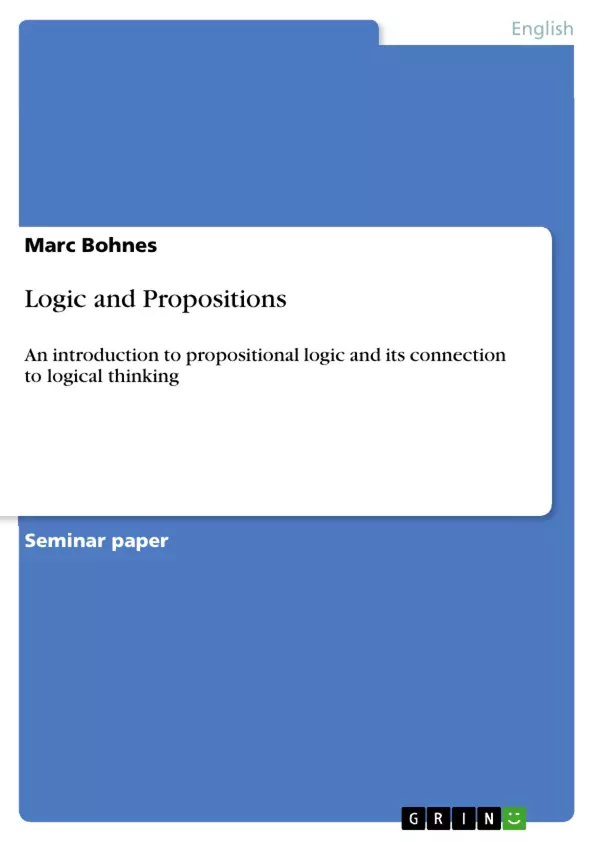This paper aims at bringing the most basic facts of propositional logic to its readers. It provides a concise yet coherent overview of the basics of propositional logic, as discussed in introductory classes on logic and linguistics.
Inhaltsverzeichnis (Table of Contents)
- Introduction
- Rationality
- Introducing Logic
- Logic and sentences
- Truth values
- Sentences and Sentence Connectors
- Negation
- Double negative
- Natural Languages in Contrast
- Conjunction
- Disjunction - inclusive vs. exclusive
- Implication
- Equivalence
- Man vs. Machine
- Logical input
- Logical Reasoning
- Evaluation
- References
Zielsetzung und Themenschwerpunkte (Objectives and Key Themes)
This paper aims to provide an overview of formal logic, examining the ways sentences can be formally represented based on their logical structure and the truth values associated with these sentences. The paper will discuss different types of propositions, their interactions, and the meaning that can be deduced from a logical analysis of these sentences. The focus will be on the basics of propositional logic. Additionally, the paper will explore the distinction between human logical thinking and its computational counterpart, as experts in various fields are working towards developing human-like robots. Finally, the paper will discuss why logic is a valuable and effective method for analyzing sentences.- Formal Logic
- Propositional Logic
- Truth Values and Semantic Analysis
- Human vs. Computational Logic
- Applications of Logic in Sentence Analysis
Zusammenfassung der Kapitel (Chapter Summaries)
Introduction
This chapter introduces the concept of logic and its use in everyday language. It discusses the idea of rationality and how humans strive for logical thinking. The chapter also emphasizes the importance of logic in organizing our experiences and how it can be viewed as a sign of intellectual capability. It further introduces the concept of formal logic, which focuses on the structure of sentences and their truth values.Introducing Logic
This chapter explores the concept of logical deduction by providing examples. It explains the process of deducing facts from given facts in a logical manner, introducing the terms "premises" and "conclusion." It discusses the importance of a universal representation for conducting logical deductions and introduces the concepts of predicate logic, universal quantifier, and existential quantifier.Logic and sentences
This chapter defines what constitutes a sentence in the context of logical deduction. It analyzes various examples of sentences and explores their logical implications. It discusses the difficulty of deducing meaning from certain types of sentences, such as greetings or interjections, and highlights the importance of contextualization for understanding the meaning of utterances.
Excerpt out of 15 pages
- scroll top
- Quote paper
- B.A. Marc Bohnes (Author), 2009, Logic and Propositions, Munich, GRIN Verlag, https://www.grin.com/document/199174
Look inside the ebook



